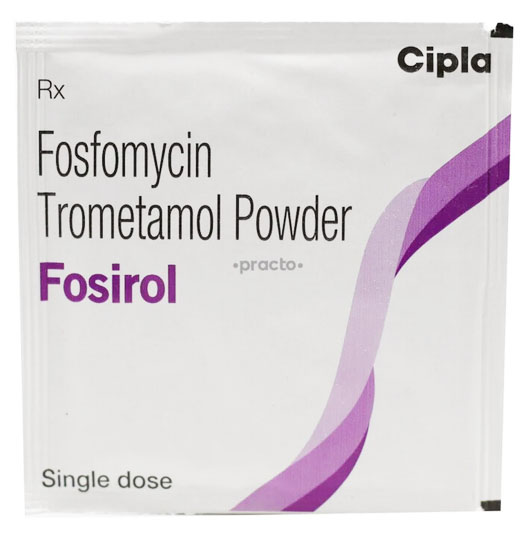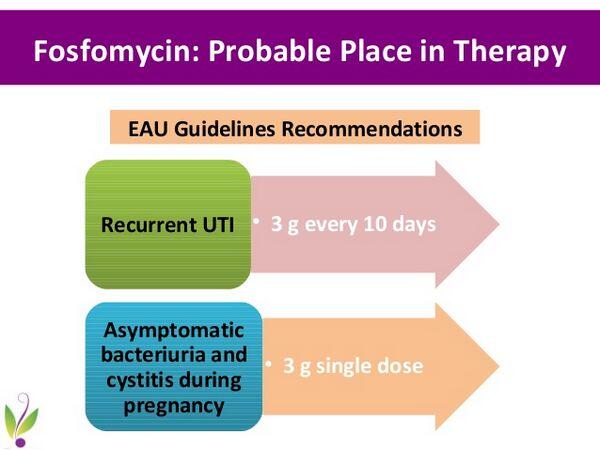Drug Nomenclature
International Nonproprietary Names (INNs) in main languages (French, Latin, Russian, and Spanish):
Description. Fosfomycin is an antibacterial isolated from Streptomyces fradiae and other Streptomyces spp. or produced synthetically.

Fosfomycin Calcium
(British Approved Name Modified, rINNM)
Drug Nomenclature
INNs in main languages (French, Latin, Russian, and Spanish):
Pharmacopoeias. In China, Europe, and Japan. European Pharmacopoeia, 6th ed., 2008 and Supplements 6.1 and 6.2 (Fosfomycin Calcium). A white or almost white powder. Slightly soluble in water; practically insoluble in acetone, in dichloromethane, and in methyl alcohol. A 0.1% solution in water has a pH of 8.1 to 9.6. Store in airtight containers. Protect from light.
Fosfomycin Sodium
(British Approved Name Modified, rINNM)
Drug Nomenclature
INNs in main languages (French, Latin, Russian, and Spanish):
Pharmacopoeias. In China, Europe, and Japan. European Pharmacopoeia, 6th ed., 2008 and Supplements 6.1 and 6.2 (Fosfomycin Sodium). A white or almost white, very hygroscopic powder. Very soluble in water; practically insoluble in dehydrated alcohol and in dichloromethane; sparingly soluble in methyl alcohol. A 5% solution in water has a pH of 9.0 to 10.5. Store in airtight containers. Protect from light.
Fosfomycin Trometamol
(British Approved Name Modified, rINNM)
Drug Nomenclature
INNs in main languages (French, Latin, Russian, and Spanish):
Pharmacopoeias. In China and Europe. European Pharmacopoeia, 6th ed., 2008 and Supplements 6.1 and 6.2 (Fosfomycin Trometamol). A white or almost white, hygroscopic powder. Very soluble in water; slightly soluble in alcohol and in methyl alcohol; practically insoluble in acetone. A 5% solution in water has a pH of 3.5 to 5.5. Store in airtight containers.
Adverse Effects and Precautions
Gastrointestinal disturbances including nausea and diarrhoea, transient increases in serum concentrations of aminotransferases, headache, visual disturbances, and skin rashes have been reported after use of fosfomycin. Eosinophilia and, rarely, angioedema, aplastic anaemia, exacerbation of asthma, cholestatic jaundice, hepatic necrosis, and toxic megacolon, have also occurred.
Antimicrobial Action
Fosfomycin is a bactericidal antibacterial. After active uptake into the cell it is reported to interfere with the first step in the synthesis of bacterial cell walls. It is active in vitro against a range of Gram-positive and Gram-negative bacteria including Staphylococcus aureus, some streptococci, most Enterobacteriaceae, Haemophilus influenzae, Neisseria spp., and some strains of‘ Pseudomonas aeruginosa although some are resistant. Bacteroides spp. are not sensitive.

Bacterial resistance to fosfomycin has been reported and can be chromosomal or, in some organisms, transferred by plasmids encoding multiple resistance (for example in Serratia marcescens). However, there appears to be little cross-resistance with other antibacterials.
Fosfomycin has been reported to show antimicrobial synergy with a wide range of antibacterials against organisms such as en-terococci, meticillin-resistant Staph aureus, and the enterobacteria.
Such synergistic effects have been reported particularly with the beta lactams, but also with aminoglycosides, macrolides, tet-racyclines, chloramphenicol, rifamycin, and lincomycin. Antimicrobial antagonism with a beta lactam has also been reported. There is some suggestion that use of fosfomycin with an aminoglycoside may also reduce the nephrotoxicity of the latter in vivo.
Pharmacokinetics
Fosfomycin or fosfomycin calcium are poorly absorbed from the gastrointestinal tract. Peak plasma concentrations 4 hours after a 1 -g dose of fosfomycin calcium are about 7 micrograms/mL, and bioavailability has been calculated at about 30 to 40%. Similar bioavailability has been reported for the trometamol salt, and plasma concentrations of about 22 to 32 micrograms/mL have been reported 2 hours after an oral dose equivalent to 3 g fosfomycin.
Fosfomycin disodium is given intramuscularly or intravenously: intravenous infusion of a 4-g dose results in peak plasma concentrations of around 120 micrograms/mL. The plasma half-life is about 2 hours. Fosfomycin does not appear to be bound to plasma proteins. It crosses the placenta and is widely distributed in body fluids including the CSF; small amounts have been found in breast milk and bile.
The majority of a parenteral dose is excreted unchanged in the urine, by glomerular filtration, within 24 hours. Urinary concentrations of up to 3 mg/mL have been reported within 2 to 4 hours of an oral dose of fosfomycin trometamol equivalent to 3 g of fosfomycin; therapeutic concentrations of 200 to 300 micrograms/mL remained in urine after 48 hours.
Uses and Administration
Fosfomycin is a phosphonic acid antibacterial given orally as the trometamol or calcium salt and intramuscularly or intravenously as the disodium salt in the treatment of a variety of bacterial infections due to susceptible organisms.
Doses are expressed in terms of the base; fosfomycin calcium 1.4 g, fosfomycin sodium 1.3 g, and fosfomycin trometamol 1.9 g are each equivalent to about 1 g of fosfomycin. In the treatment of acute uncomplicated infections of the urinary tract, fosfomycin trometamol is given as a single dose equivalent to 3 g of fosfomycin. Fosfomycin trometamol has also been used for the prophylaxis of infection in transurethral surgical procedures.
For a discussion of surgical infections and their prophylaxis and treatment, see p. 195. The usual oral dose of fosfomycin calcium is the equivalent of 0.5 to 1 g of fosfomycin every 6 to 8 hours. Higher doses have been given parenterally as the sodium salt, with up to 20 g daily having been given intravenously in severe infection. Fosfomycin has also been used with beta lactam antibacterials.
Preparations
Proprietary Preparations
| Country | Medication Names |
|---|---|
| Argentina | Veramina |
| Austria | Monuril |
| Belgium | Monuril |
| Brazil | Monuril |
| Canada | Monurol |
| Chile | Monurol |
| Finland | Monurol |
| France | Fosfocine; Monuril; Uridoz |
| Germany | InfectoFos; Monuril |
| Greece | Monurol |
| Hong Kong | Monurol |
| Hungary | Monural |
| Indonesia | Fosmicin; Fosmidex; Monuril |
| Israel | Monurol |
| Italy | Afos; Faremicin-F; Fosfocin; Francital-F; lpamicina; Monuril; Ultramicina |
| Japan | Fosmicin-S |
| Malaysia | Monurol |
| Mexico | Fosfocil; Monurol |
| The Netherlands | Monuril |
| Philippines | Monurol |
| Poland | Monural |
| Portugal | Monuril |
| Russia | Monural |
| South Africa | Urizone |
| Spain | Fosfocina; Monurol; Solufos |
| Sweden | Monurol |
| Switzerland | Monuril |
| Thailand | Fosmicin |
| Turkey | Monurol |
| United States of America (US and USA) | Monurol |















































